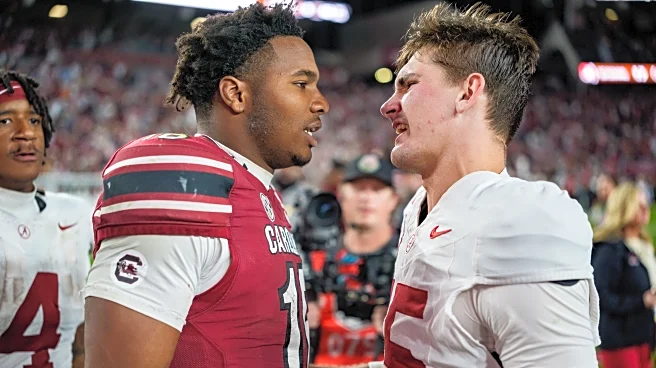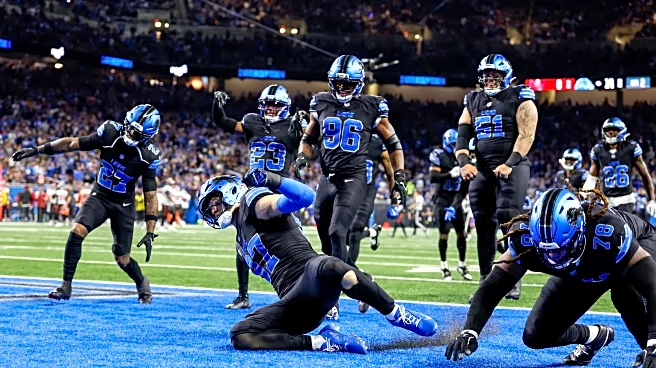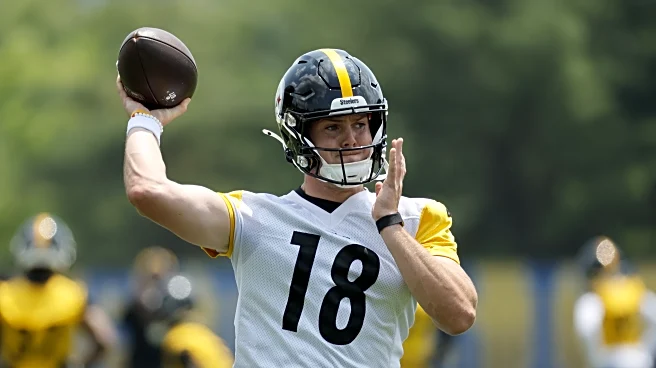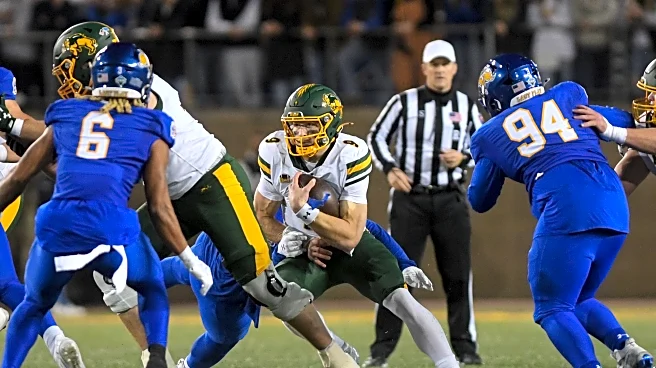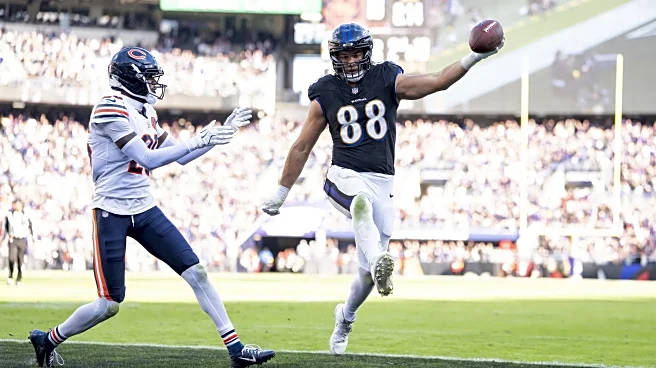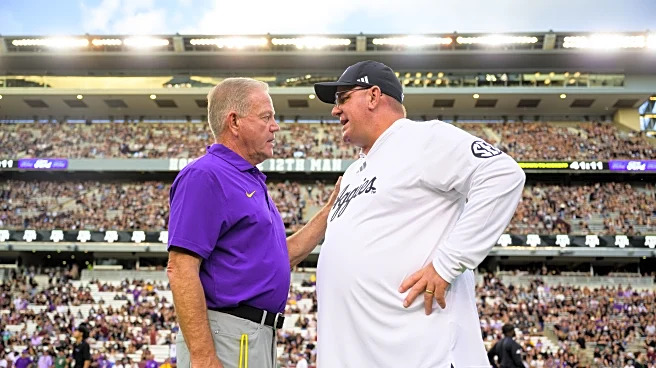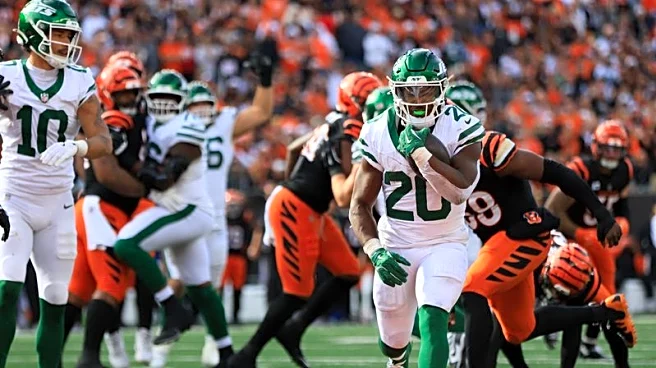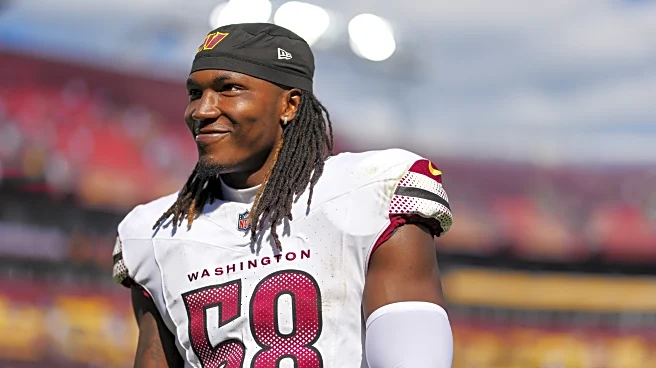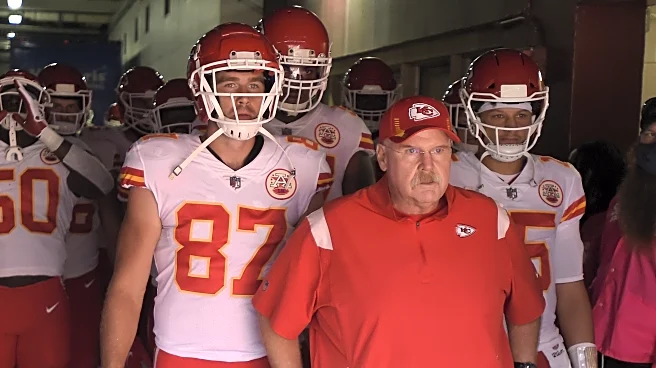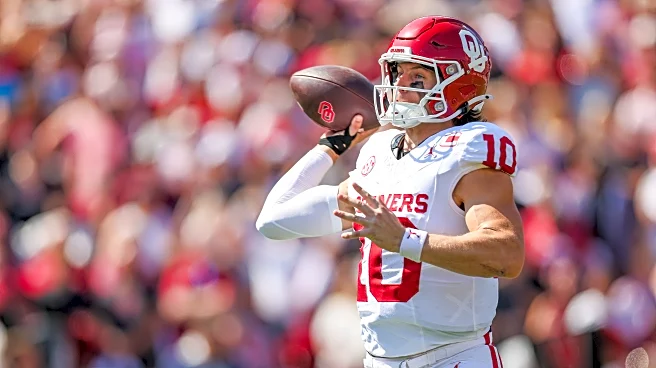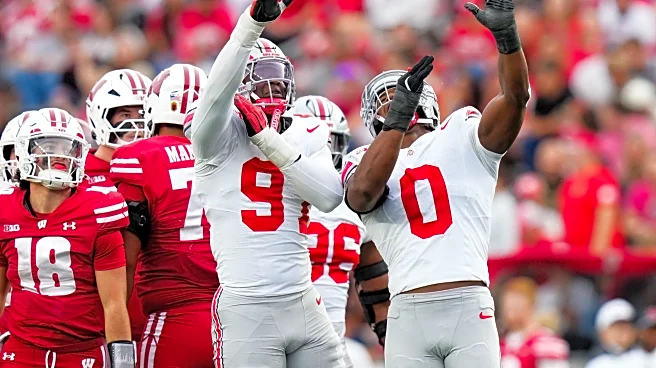It’s hard to believe it, but we have little more than a month left in the college football regular season. Schools will play their last scheduled games by Nov. 29, conference chamionships will follow the week after, Army-Navy week, and then bowl season will officially have arrived, followed by the college football playoffs.
There’s still a lot to learn about each of the teams jockeying for playoff position, but for our purposes, the field of top quarterback prospects is growing ever clearer. While
I think consensus is starting to crystallize around who the top four passers in this class are — each of whom has remaining college eligibility — there are still questions about at least a handful of other names that could sneak into first or second round consideration.
Below you will see big board rankings from several notable outlets and experts. These rankings reflect a quarterback’s overall prospect ranking from the listed source, and are not position-specific unless otherwise noted.
These rankings paint a picture for us. For starters, there is little consensus on who the top quarterback is, which tells you how wide open this class is and how uncertain publications and draft experts are on who will actually declare. The only two signal callers above who have no choice but to declare — Nussmeier and Beck — are having the types of seasons that could see them fall out of the first round altogether.
Still, I think it’s safe to say we can narrow our scope just a bit. Until we hear otherwise, the names above are the passers we should most pay attention to moving forward.
The games still on the schedule will be most important for analyzing these prospects, but in the meantime, let’s examine these prospects through the lens of an existing theory that’s been making its rounds for nearly 20 years.
The Parcells’ rules of drafting quarterbacks

If you’re up to date on your NFL football history, there’s a chance you’ve heard about the criteria for drafting a quarterback laid out by Hall of Fame coach Bill Parcells. Parcells was the Executive VP of football operations for the Miami Dolphins in 2008 when they selected Chad Henne in the second round of the draft. While explaining the pick to the media after the draft, Parcells lent some insight into his decision-making process when selecting a signal caller.
Parcells’ “rules” have been oft discussed since, and essentially boil down to these tenets:
- Prospect should be a senior and graduate from college
- Prospect should be a three-year starter who has started 30 games and won at least 23 games
- Prospect should have a 2:1 touchdown-to-interception ratio
- Prospect should complete a minimum of 60% of passes thrown
Now, before you rush to the comment section, let’s recognize that this isn’t a foolproof rule set. Henne was not the savior the Dolphins have desperately been seeking since Dan Marino’s retirement, nor does simply following these rules guarantee success. Still, I hear these rules quoted every draft cycle, so I wanted to use these rules to examine some recent notable quarterback draft classes, as well as see how the potential 2026 class stacks up.
Putting the Parcells’ rules to the test

The two most notable quarterback draft classes in recent years are undoubtedly the classes of 2018 and 2024. The former featured Baker Mayfield, Sam Darnold, Josh Allen, Josh Rosen, and Lamar Jackson; the latter Caleb Williams, Jayden Daniels, Drake Maye, Michael Penix Jr., J.J. McCarthy, and Bo Nix.
Those classes share a lot of similarities with the 2026 class, but primarily for two reasons:
- Both classes featured an above-average number of quarterbacks drafted. Since 2015, an average of 3.4 quarterbacks have been drafted in the first round. Remove the 2018 and 2024 classes, and that average falls to 2.7 quarterbacks. The 2026 class has six quarterbacks currently projected as first-round picks, should all of them decide to declare.
- Like this current class, neither of those classes had a clear favorite to be selected as QB1. Despite that, there was enough depth in the class for a high number of selections.
So with those similarities in mind, let’s take a look at how each of these quarterbacks fared under Parcell’s standards. I’ll say again, no system or method is foolproof. As we look at these results, think less about perfect accuracy and more about what the strengths and flaws of this system are. Do any of the metrics of measurement seem more relevant than others? Are there any useful patterns?
I’ve also included some of their NFL careers to add some extra perspective. I’ll acknowledge that I do not think W-L records should be a QB stat. They just don’t provide enough context. A quarterback can play well and still lose a game. Likewise, he can play poorly and still win if his teammates pick him up with their play. Winning and losing are truly a team effort in football. But that aside, it’s undeniable that winning influences our opinions of quarterbacks, at least to some degree.
Takeaways:
- I don’t think being a senior or graduating is all that relevant in the current landscape, but I think starting 30 games is one of the landmarks that I will value more, moving forward. I won’t disqualify a prospect for falling short, but I will look at them a little more scrutiny. It just makes sense, right? With 30 starts, you get a much clearer picture than you do with someone who’s played less. Some recent examples of QBs who didn’t live up to their billing after falling short of this benchmark include: Anthony Richardson (13), Dwayne Haskins (14), Trey Lance (17), Mac Jones (17), Justin Fields (22), Bryce Young (27), and Zach Wilson (28).
- If anything, the 60% completion mark is too low of a bar now. Granted, the only two quarterbacks in the table above that failed to meet that benchmark are inarguably the two best quarterbacks in the entire list. They’re also two of the biggest historical outliers ever.
- The 23 wins metric is also interesting. Only four of our quarterbacks fell short of this: Allen, Darnold, Rosen, and Maye. Of those, Allen is wildly successful. Rosen was a huge disappointment. Darnold seemed like a lost cause at first, but now seems to be fairly competent in the right situation and with 80 NFL starts under his belt. Maye— who I admittedly cannot speak rationally about because he was my QB1 in that loaded 2024 class — is seemingly in the midst of a breakout season this year. That’s a wide range of outcomes, but considering all those names I listed in the first bullet point failed to reach 23 wins, except for Young (24 wins), it seems like a decent place to set your floor.
- The TD:INT ratio is another metric I think needs adjusting. Not a single one of these QBs failed to meet it, so using it to filter out players doesn’t decrease your chance of drafting a Wilson or Rosen.
So, how do our 8 prospects compare?

If we’re following the tenets of Parcell religiously, this class scares you.
I think it’s important to note that these quarterbacks either began college in 2020 (Beck) or entered school in the immediate years following the COVID-19 season, which extended the eligibility for many of their college predecessors.
Still, if we believe in seeing 30 starts and hoping they get 23+ wins, only two of our quarterbacks have a shot at achieving both.
One is Beck, who is widely considered a fringe first-rounder based on his college career, but has already achieved both thanks to two years starting on a great Georgia team and an uber-talented Miami squad this year. The other is Mendoza, who, with health, will definitely reach 30 starts and could potentially reach 23 wins with a conference championship and a deep playoff run.
That isn’t to say these quarterbacks are doomed. Sellers has shown tidier footwork this season and has a physicality that will play at the NFL level. Moore has one of the prettiest strokes in all of college football and has clearly grown leaps and bounds during the time between his UCLA debut and now. Simpson, though limited in starts, has some scouts raving about his processing ability and ability to make smart adjustments at the line of scrimmage pre-snap. Mateer has drawn Mayfield comparisons, held up under SEC competition following a transfer from Washington State, and, unlike Mayfield, won’t have to be taken at No. 1 overall. And Maiava looks like he could find success with a team that builds around the run game and his play-action and RPO ability.
While it would make sense for several of these guys to return to school, landing in a favorable spot is just as important. Whether or not you believe the Steelers are a favorable spot is the topic for another article.
